Peptide Phosphorylation
Peptide phosphorylation is ubiquitous and essential post-translational modification.
Peptide phosphorylation is ubiquitous and essential post-translational modification (PTM), it adds the phosphate (PO43-) group to peptides containing serine, threonine or tyrosine by covalent bonds. Phosphorylation of peptides are extremely critical modulator of PTM protein function.
Protein phosphorylation is a post-translation modification, the serine, theronine or syrosine residues in proteins are phospohorylated by the addition of covalent phosphate groups. Phosphorylation process occurs primarily on the hydroxyl side chain of serine (Ser) and threonine (Thr) residues, while less extent on the phenolic side chain of tyrosine (Tyr) residues. As one of the most common mode of protein regulation, protein phosphorylation has essential roles in every aspect of cell life.
Phosphorylated Peptide
Phosphorylated peptide synthesis is the site-specific synthesis, phosphorylation of peptides is the most common and important method of post-translational modification of peptides. Phosphopeptides are synthesized by either specific incorporation of protected phospho-amino acids or phosphorylation of post-assembly peptides at serine, threonine or tyrosine residues. Qyaobio synthesized thousands of phosphorylated peptides with the best suitable method. Except the traditional phosphopeptide synthesis, we also provide innovative solutions for kinase and phosphatase inhibitor design, screeing, optimization.
The protein phoshporylation and dephosphorylation are crucial process for the proper regulation of signaling pathways, this is the control base of cellular functions. Therefore, abnormal phoshporylation and dephosphorylation result in many diseases, such as cancer, diabetes, Alzheimer’s and cardiac disease.
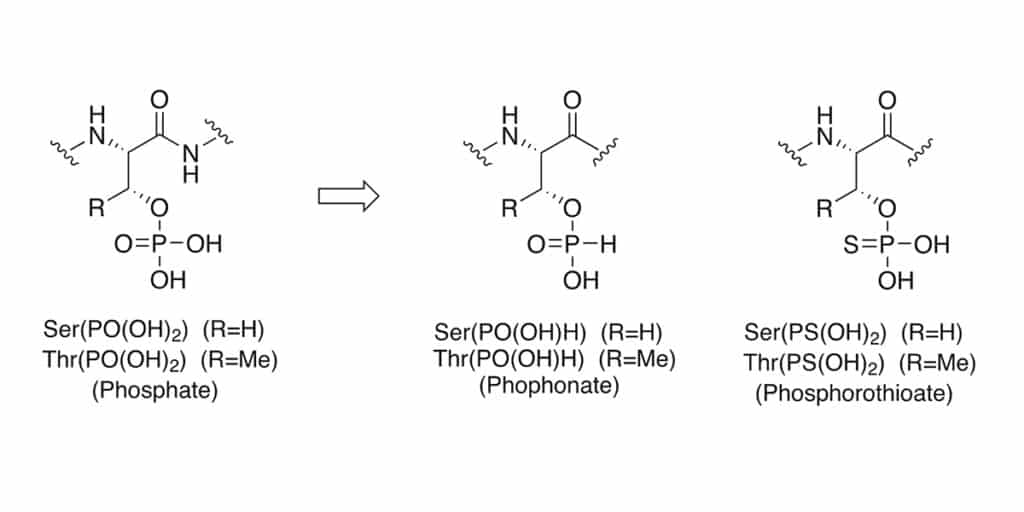
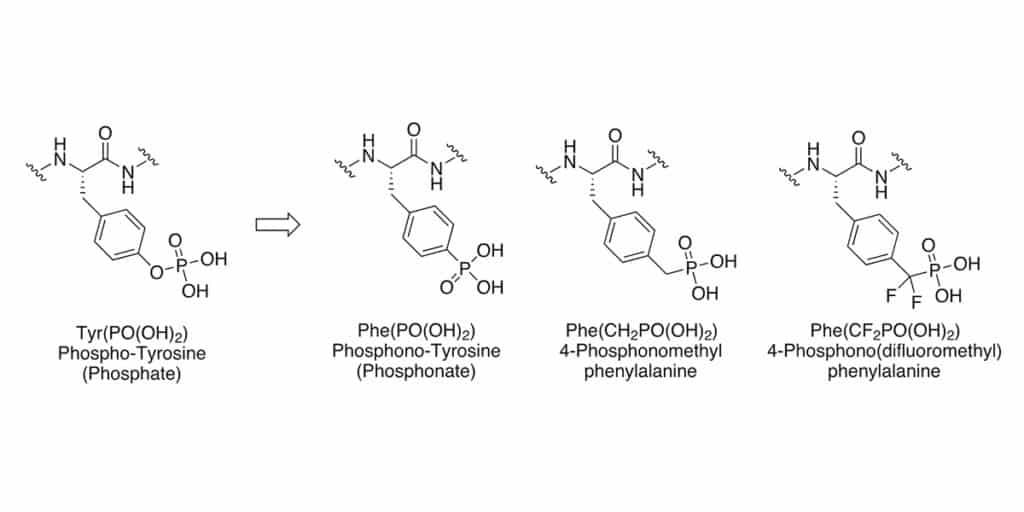
Aberrant protein phosphorylation in brain regions is the key pathogenic event in Alzheimer’s disease. Disrupt signals from inappropriate kinase activity/expression result in abnormal cell function, this leads to different types of cancer. Therefore, site-specific synthesis of phosphopeptides is critical for protein phosphorylation study and research.
Qyaobio is able to synthesize phosphorylated peptides with specific residues (pSer, pTyr, pThr) in any combination. Our phosphopeptides are synthesized by custom peptide phosphorylation requests, no matter single, or multiple incorporation of phosphoserine (-pS-), phosphotyrosine (-pY-), or phosphothreonine (-pT-) residues.
Typical Phosphoryl Groups
Through the phosphoester bond formation, the phosphoryl group can add on the side chains of Serine (Ser), Threonine (Thr), and Tyrosine (Tyr). The mechanism of peptide phosphorylation is the process of transferring phosphoric acid group to amino acid residues, this mainly occurs on the hydroxyl groups of serine, tyrosine and threonine.
Phospho-serine
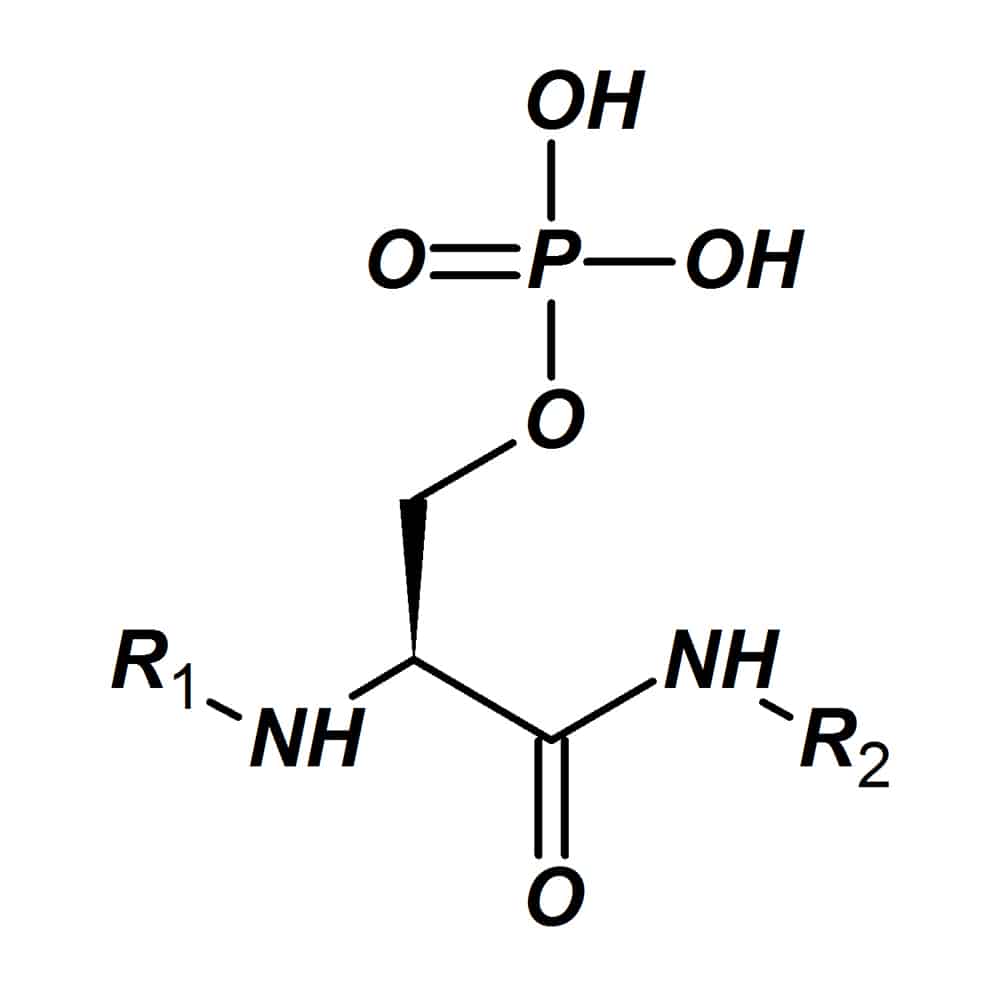
Phospho-threonine
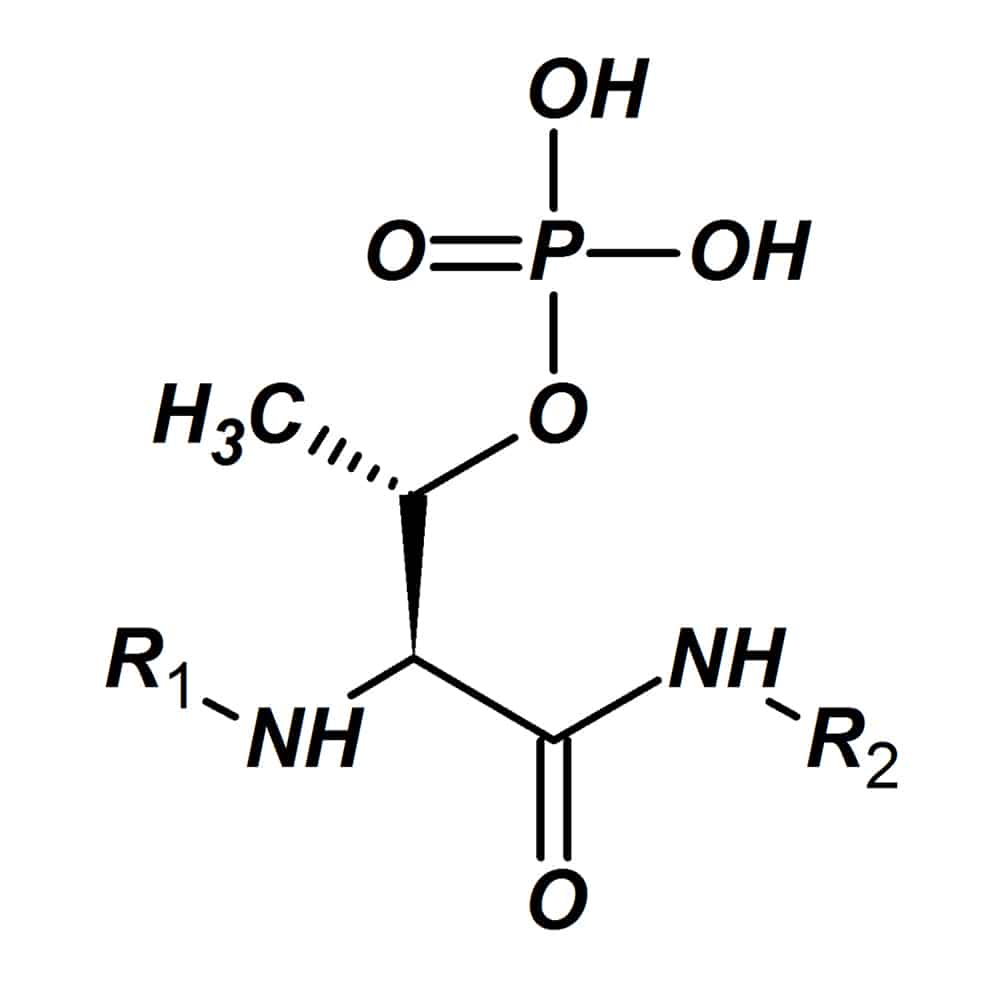
Phospho-tyrosine
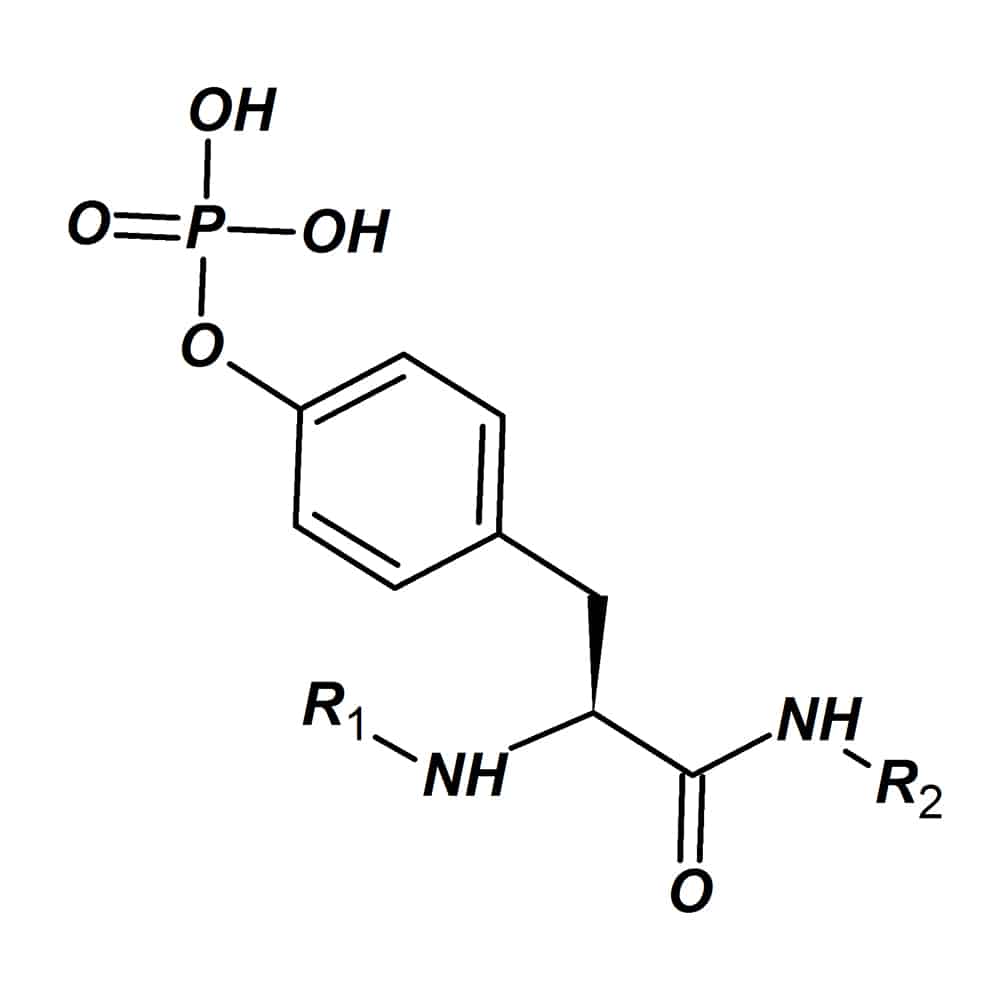
Phosphorylated Peptide Applications
The main applications of phosphorylated peptide are as following:
- Phospho-specific antibodies development
- Mass standards in proteomic identification
- Phosphatase substrates for assay development
- Quantifying and Mapping of phosphorylation sites
- Cellular signaling transduction pathways
- PTMs structural research in regulation of protein function
- Disease pathology research in cancer, neurodegenerative and metabolic disorders
- Control peptides for kinase profiling functions
- Phosphatase substrates applications
- Lead structure for phosphatase inhibitor discovery
Peptide phosphorylation plays a critical role in cell signaling process, in order to regulate cellular biological functions. It nearly involves all life activities, such as gene expression, apotosis, metabolism, tumor formation, etc. Phosphorylated Peptides have unique structures and function with bio-activity. For example, casein phosphopeptides (CPPs) are applied to function food for minerals absorption of human body.
Phosphopeptides
There are two kinds of phosphopeptides: mono-phosphorylated peptides and phosphorylated peptides. In order to synthesize high purity phosphorylated peptides, Qyaobio applies different strategies for reliable phosphopeptides.
The first method is direct step-wise solid phase synthesis, this method applies the mono-benzylated phosphoamino acids and Fmoc chemistry in two steps: the bzl-pAA coupling, the next AA coupling. Qyaobio applies microwave technology to couple bzl-pAA, it makes phosphopeptide synthesis as simple as conventional solid phase synthesis.
The second method is the global phosphorylation. This method involves the post-synthetic phosphorylation of unprotected hydroxyl groups on solid supports. After phospho synthesis, all residues are phosphorylated in liquid phase at one step. This has the advantage of avoiding the difficulties of bzl-pAA synthesis.
Call Us
+86(021)-50795728
+86(027)-60707970
